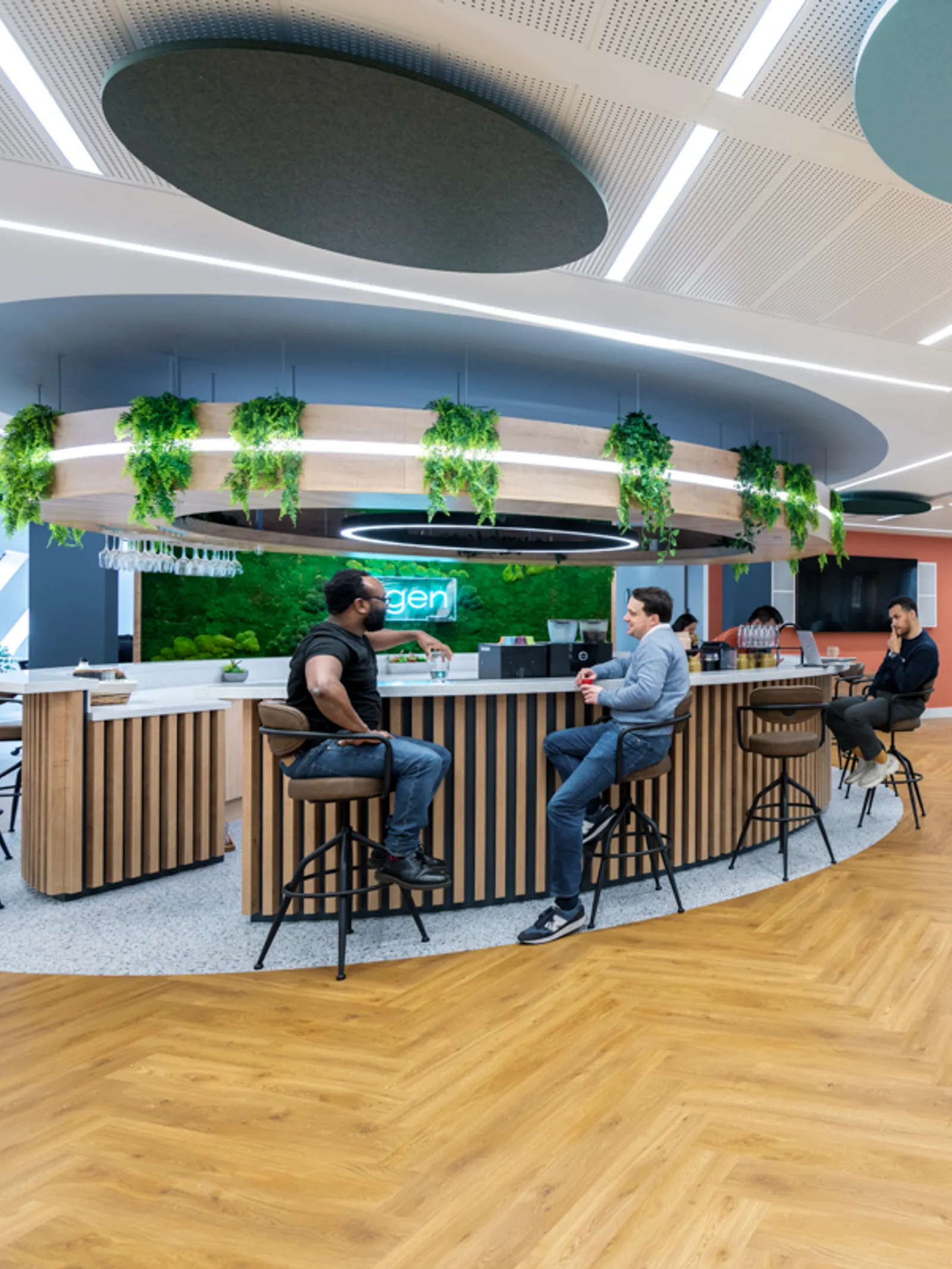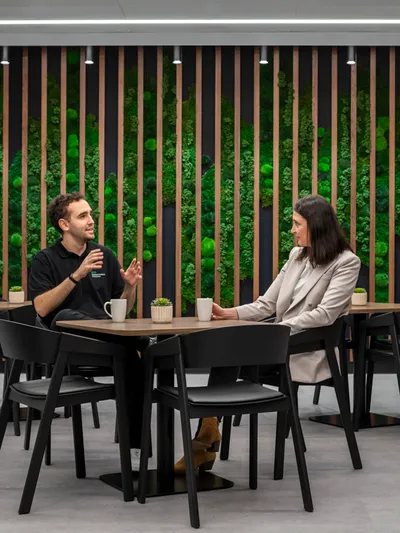When it comes to office work, the landscape has undergone a dramatic shift over the last few years. Where a typical employee would typically be found in the office 40+ hours a week, the introduction of hybrid, agile, and flexible working has significantly altered the way work is structured and how this is supported by office design.
While the terms hybrid working, agile working, and flexible working are often used interchangeably, each carries distinct meanings, implications, and challenges.
This guide explains the differences, explores benefits and drawbacks, and shows how office design can support modern workstyles.
What is Agile Working?
Agile working is a way of working that gives employees the freedom to choose when, where, and how they work to achieve the best outcomes.
Unlike the agile methodology used in software development, agile working is not about sprints or stand-ups—it’s a workplace philosophy centred on flexibility and outcomes.
Core Principles of Agile Working
The core principles of an agile approach are centred around flexibility, collaboration and a drive towards outcome-focused work. Work is no longer tied to a fixed location, inflexible hours or even fixed roles.
Instead, there is more fluidity and flexibility and offices provide spaces and tools to support this, encouraging teamwork and creativity, be that in person or remotely. Performance isn’t about simply turning up, but is zoned in on delivering results and achieving set outcomes.
The Benefits and Challenges of Agile Working
Agile working environments can be really beneficial for businesses where innovation and problem-solving are an integral part of business operations. With greater adaptability to change and the opportunity to build autonomy and trust within teams, an agile working environment best suits companies that thrive on collaboration, creativity, and rapid response to evolving market demands.
However, an agile working environment is not without its challenges. This more flexible and autonomous approach can be lost in translation, with the potential for employees to take advantage of working arrangements and greater self-management. Therefore, strong leadership skills as well as trust between employees and employers is paramount. Naturally agile working is also not suitable for every type of role.
Agile Working Office Design Features
Agile workplaces often feature:
Modular office layouts with movable furniture make it easy to reconfigure the office layout to match the purpose.
Breakout zones for informal collaboration to encourage teams to communicate, socialise and get creative.
Digital tools that enable seamless project-based teamwork.
Case in point: Many UK creative agencies use agile working, designing their agile workspaces with flexible project rooms and technology-enabled collaboration hubs.
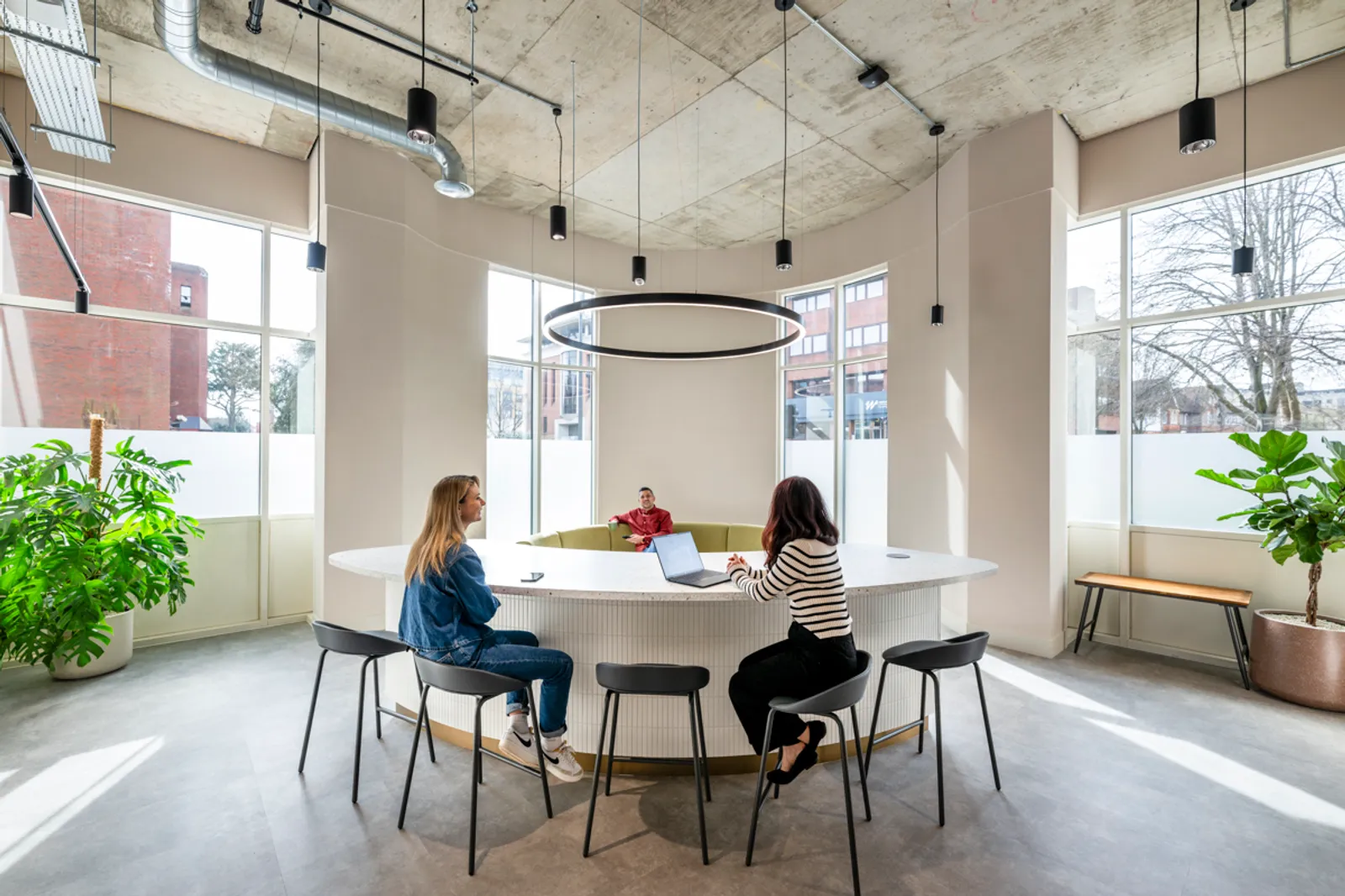
What is Flexible Working?
Flexible working means adjusting when, where, or how someone works to suit their needs and role.
It is typically used in an HR or employment law context, particularly in the UK.
Types of Flexible Working
Different types of flexible working arrangements can be considered. The following are examples of types of flexible working that a company may adopt.
Remote work (working from home or elsewhere).
Part-time hours.
Compressed hours (e.g. four longer days instead of five).
Job sharing between two employees.
Flexible start/finish times to accommodate personal commitments.
UK Statutory Framework
In the UK, all employees have the legal right to request flexible working. Employers must consider requests reasonably, though not all roles can accommodate flexibility.
Benefits and challenges of flexible working
Flexibility in the workplace typically improves staff retention and employee well-being. Giving employees the freedom to work to a less stringent schedule means that they can create a better work-life balance, making more room for other commitments or interests.
Flexible working supports inclusivity and acknowledges different lifestyles and working styles, and adopting a flexible working scheme can attract talent seeking more contemporary working arrangements.
The challenges of flexible working can include coordination difficulties - getting people together in the same room at the same time could become laborious, particularly if they have conflicting outside commitments. There is also a possibility of actual or perceived unfairness between teams or members within the same team, depending on how individuals take advantage of flexible working.
Naturally, some roles are less adaptable to flexible working patterns than others, which can lead to tension or a company's inability to properly implement a flexible working agreement.
Office Design Implications for Flexible Workplaces
Flexible working may require:
Hot desking to support fluctuating office attendance.
Quiet pods for focused tasks.
Digital booking systems for desks and rooms.
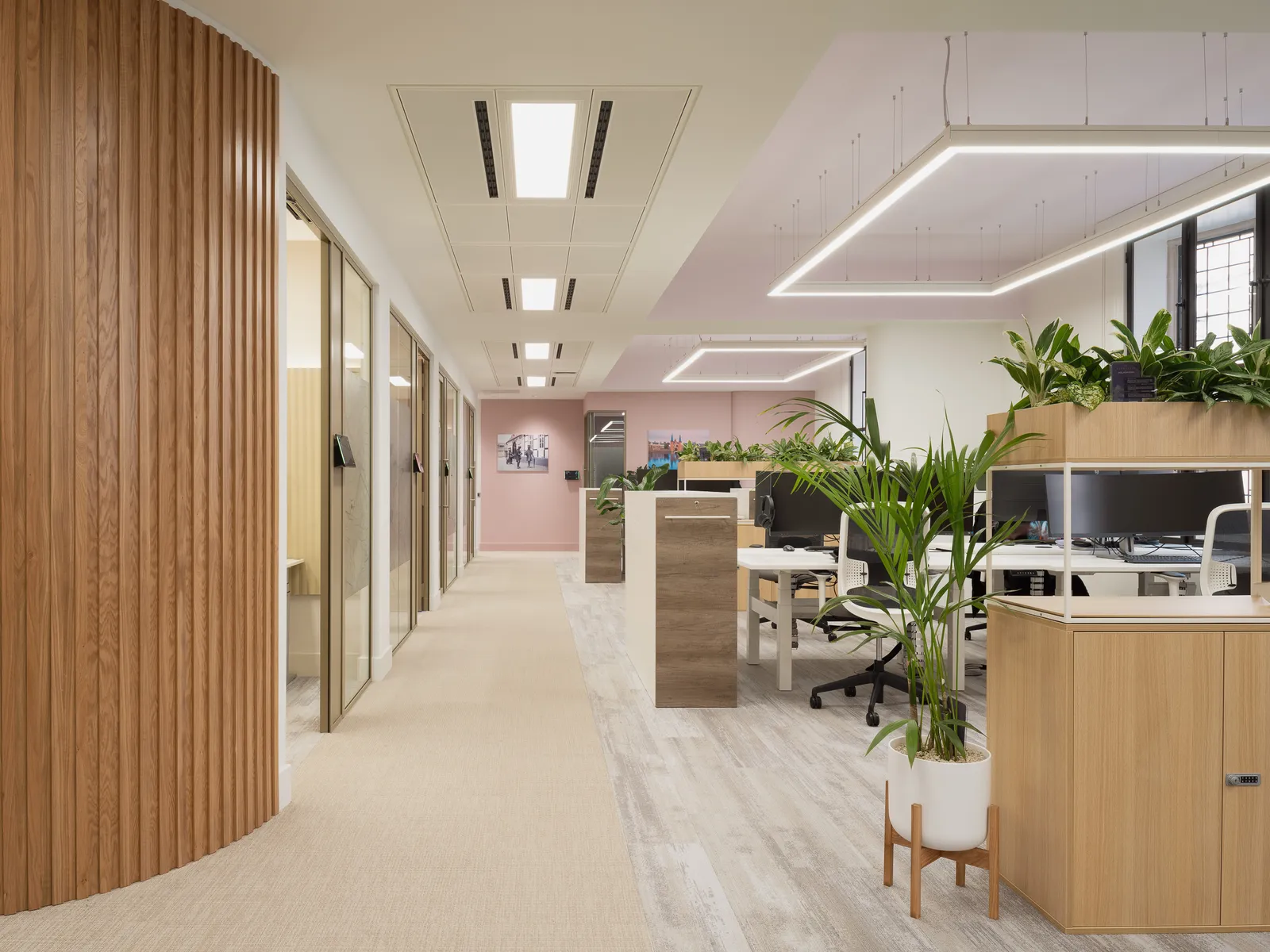
What is Hybrid Working?
Hybrid working blends office-based and remote work, giving employees some flexibility while retaining in-person collaboration.
It is now one of the most common workplace models, particularly in knowledge-based industries.
Types of Hybrid Working
There are different forms of hybrid working, and some of the terms associated with this working arrangement include:
Office-first: This is where the office remains the default workplace. However, there is an arrangement where employees can work remotely either on set days or for a certain number of days/ hours per week.
Remote-first: This is where the majority of work will take place outside the office, but the office remains available for those who need or prefer to come in.
Fixed hybrid: Specific prescriptive office-based days are set out. These could be different for different team members depending on their roles and who else they might need to work with within the business.
Flexible hybrid: This is a hybrid working practice where employees have more autonomy over which days they choose to come into the office.
Benefits and challenges of hybrid working
Hybrid working can benefit teams who need to carve out opportunities for collaboration alongside periods of individual focus time. Because hybrid working means less people in the workplace at any one time, real estate costs tend to reduce.
Remote hires can also be considered, which broadens the talent pool and makes for an enticing opportunity for those who are looking for workplaces that support travel opportunities and so on.
Hybrid working models can however, risk creating a “two-tier workforce” between office and remote staff. The hybrid workplace will also require more advanced technology to ensure meetings can be conducted effectively and seamlessly with remote employees. Challenges around culture-building and management may also surface.
Office Design Implications for Hybrid Working
Hybrid office design typically requires investment in:
Collaboration hubs instead of rows of desks.
AV-equipped meeting rooms for hybrid meetings.
Shared desk models to reflect variable attendance.
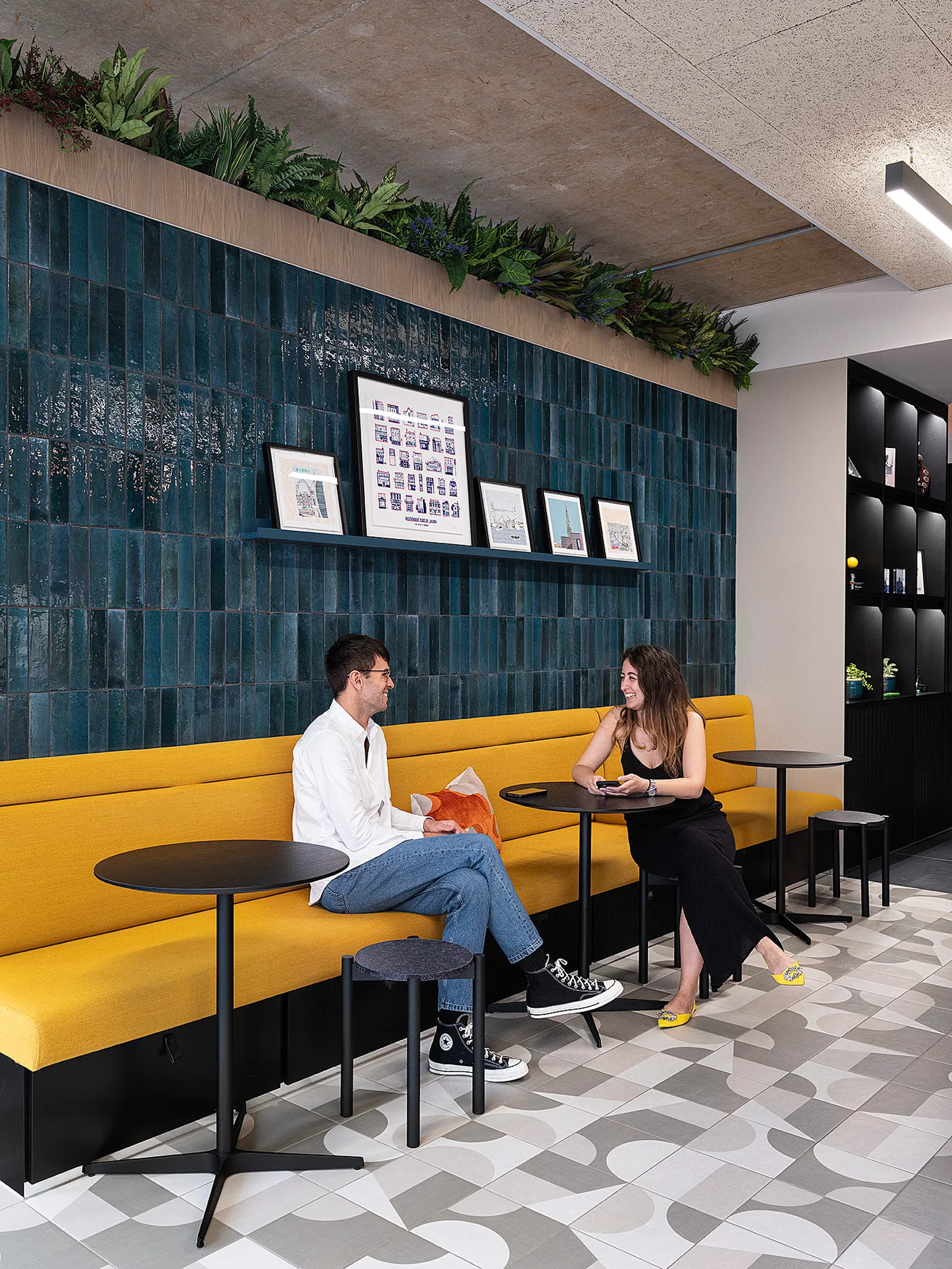
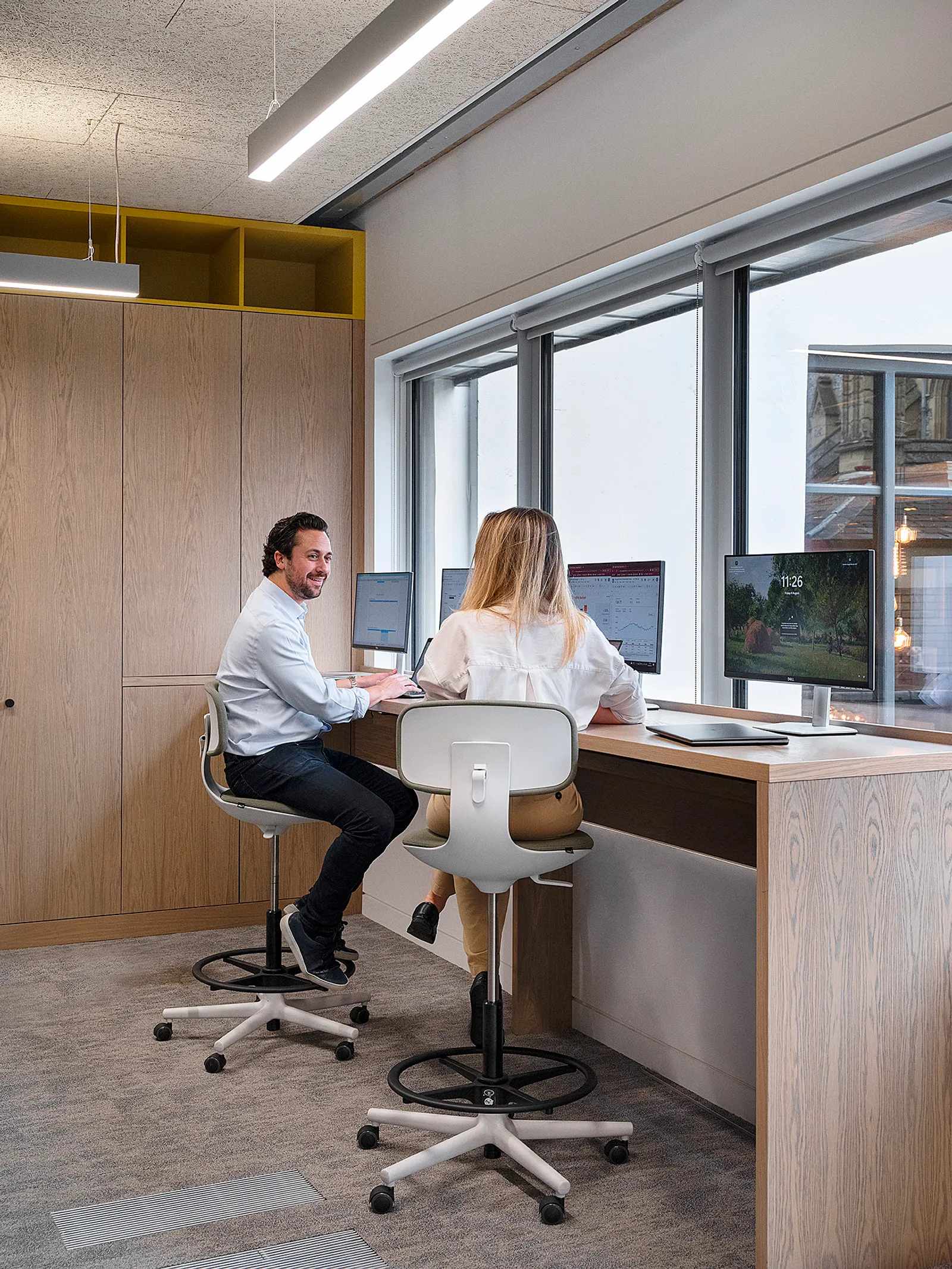
Hybrid vs Agile vs Flexible Working
Although related, these models have different applications.
Comparison Table
Model | Definition | Benefits | Challenges | Best For | Office Design Needs |
Agile Working | A way of working focused on how work gets done, with flexibility in time, location, role, and tools. | Innovation, autonomy, adaptability. | Needs strong leadership, not for routine roles. | Project-based, creative industries. | Modular layouts, project rooms, collaboration zones. |
Flexible Working | Adjustments to when, where, or how people work (e.g. part-time, remote, compressed hours). | Retention, wellbeing, inclusivity. | Coordination challenges, not all roles eligible. | Diverse organisations, employee wellbeing. | Hot desking, quiet pods, inclusive design. |
Hybrid Working | A blend of office-based and remote work, with fixed or flexible office days. | Balance of focus & collaboration, cost savings. | Risk of two-tier culture, management complexity. | Knowledge-based sectors, large firms. | Collaboration hubs, hybrid meeting rooms, shared desks. |
Narrative Comparison
Agile is about the philosophy of work: outcome-driven, flexible, and project-based.
Flexible is about employment arrangements: adapting hours, locations, and roles.
Hybrid is about where work happens: balancing office and remote working.
Example scenarios:
A creative agency might adopt agile working with modular project rooms.
A law firm might offer flexible working with part-time and job share options.
A global consultancy might use hybrid working with three office days per week.
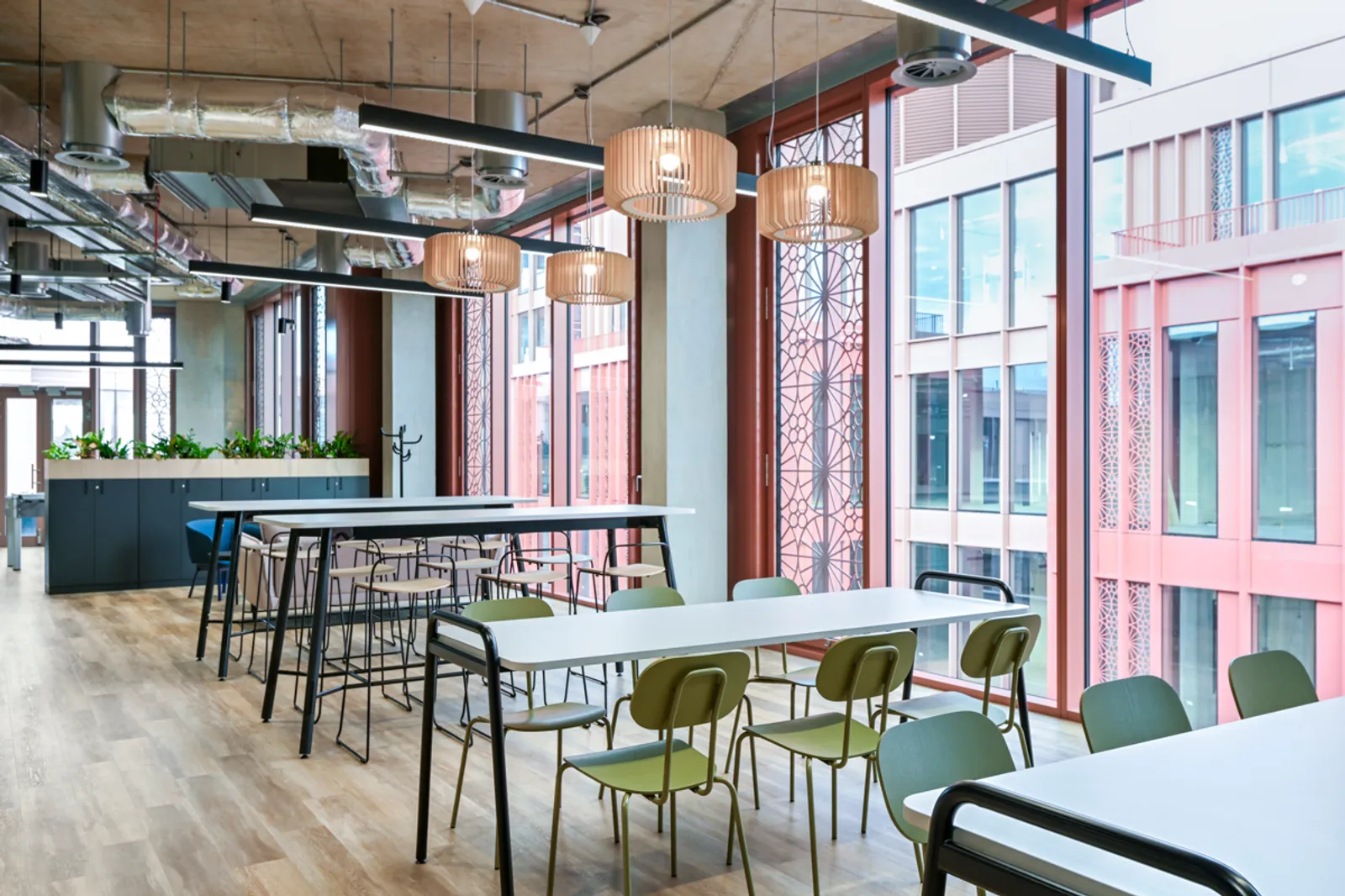
Designing Offices for Modern Workstyles
Office design underpins the success of any work model, and if a company wishes to adopt hybrid, agile or flexible working, they need, first and foremost, to ensure that their workplace is fit for purpose.
The Core Principles for all types of work styles
Balance collaboration, focus, and social interaction.
Prioritise modularity and adaptability.
Integrate technology and booking systems seamlessly.
Agile Office Design
Modular layouts and movable furniture.
Innovation hubs and project spaces.
Flexible Office Design
Hot desking to accommodate varied attendance.
Quiet pods for focus.
Inclusive layouts that support accessibility.
Hybrid Office Design
Collaboration hubs and AV-equipped meeting rooms.
Breakout zones for social connection.
Shared desks to optimise space.

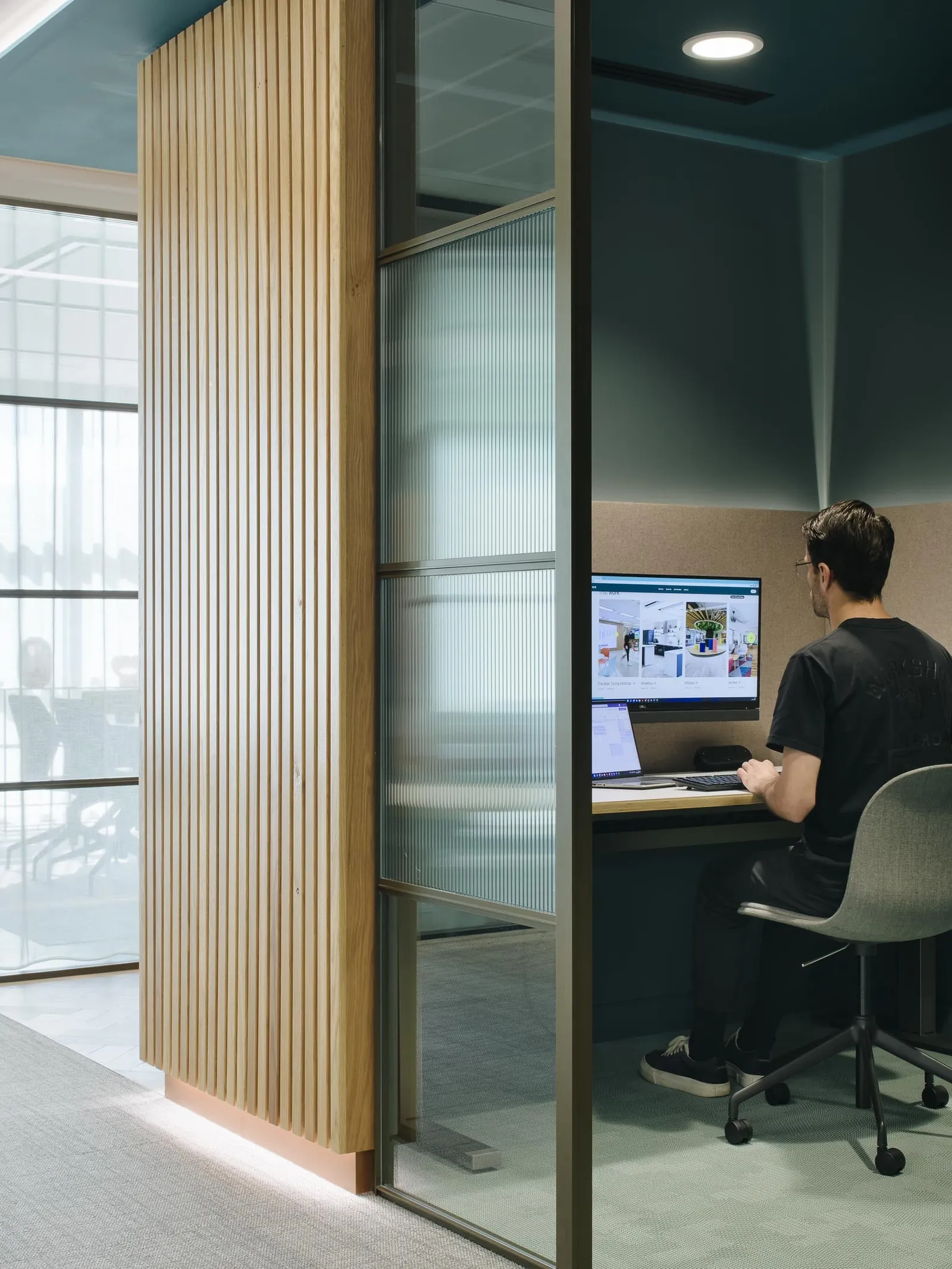
Implementing New Ways of Working
Transitioning to new work models requires careful planning. Businesses should first audit their current state, assessing roles, processes and company culture. By setting clear objectives such as improving collaboration or reducing overhead costs, businesses can tailor their approach to ensure it aligns with their goals.
Once the new way of working has been implemented, leaders must take responsibility to role-model new behaviours and encourage employees to follow suit. Developing transparent and easily digestible policies and guides for employees to follow will help ensure consistency and minimise objections or disagreements.
Running feedback surveys and piloting new ways of working can help cement employee buy-in and measuring impact in terms of KPIs such as employee satisfaction, space utilisation, and productivity can help to ensure that the new way of working is a success.
Future Trends in Workstyles
Looking ahead, workplace strategy will continue to evolve. We can expect to see an even greater focus on office sustainability ideas and trends, including a trend in reduced commuting as well as greener office design and energy-efficient fit-outs.
Wellbeing will also continue to be a priority, and offices that provide carefully considered, inclusive spaces to benefit employees can expect to attract top talent. In terms of technology, AI, IoT, and AR/VR are reshaping collaboration, making different ways of working even more seamless.
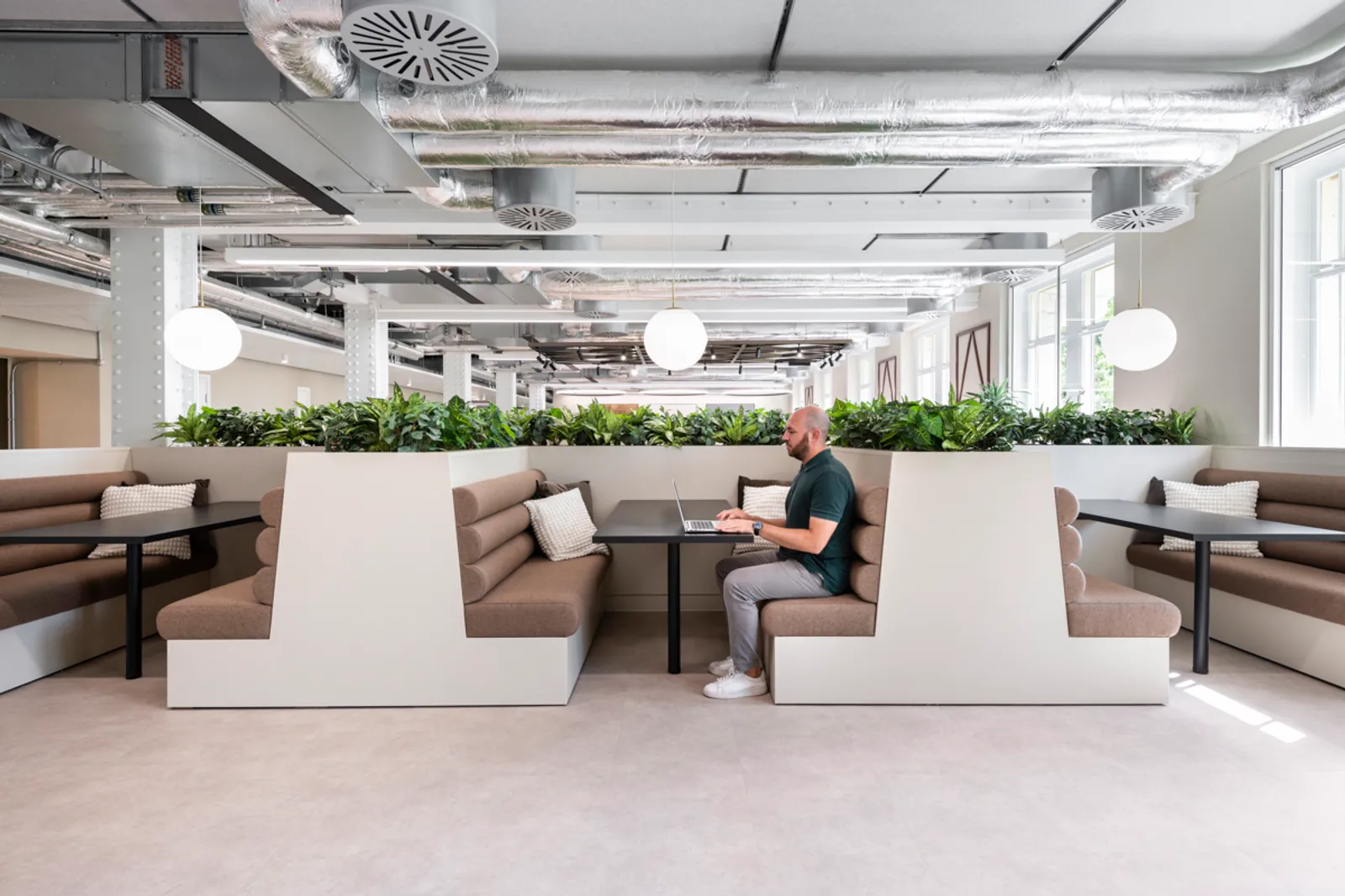
FAQs About Hybrid, Agile and Flexible Working
What is the difference between agile and hybrid working?
Agile working is about how work is organised; hybrid working is about where it happens.
Is flexible working the same as remote working?
No. Remote working is one form of flexible working, but flexibility also covers hours, job shares, and compressed weeks.
Can employers refuse flexible working requests?
Yes, in the UK, employers can refuse on specific grounds (e.g. business needs), but they must consider requests fairly.
What office design best supports hybrid working?
Collaboration hubs, hybrid-ready meeting rooms, and flexible desk layouts.
How does agile working improve productivity?
By giving employees autonomy, encouraging collaboration, and focusing on outcomes rather than processes.
Which model is best for small businesses?
It depends on the sector. Agile is effective for creative SMEs, flexible working helps retain diverse talent, and hybrid may suit knowledge-based start-ups.

